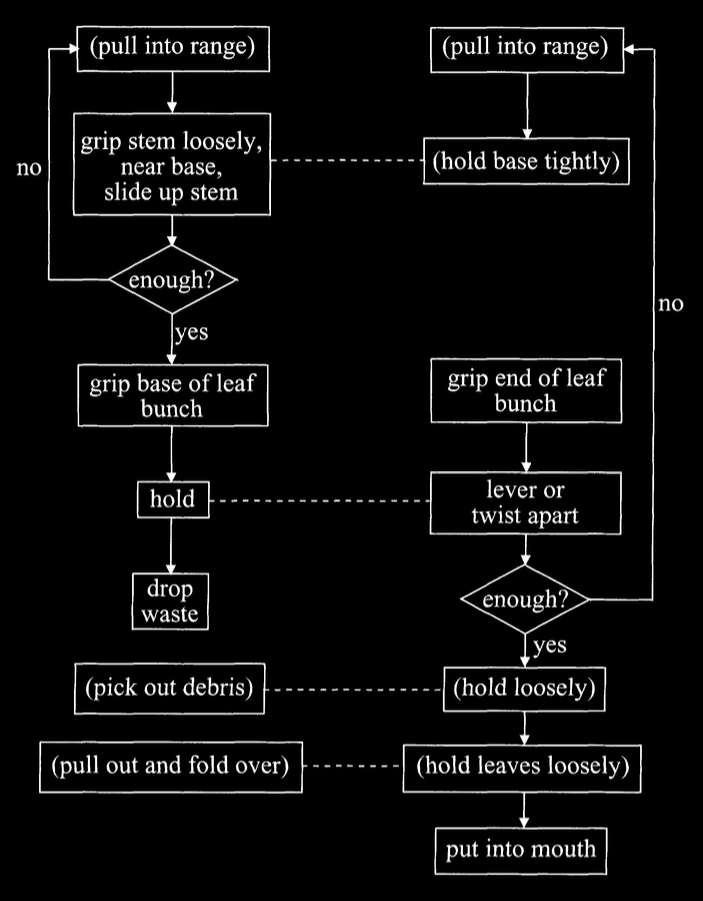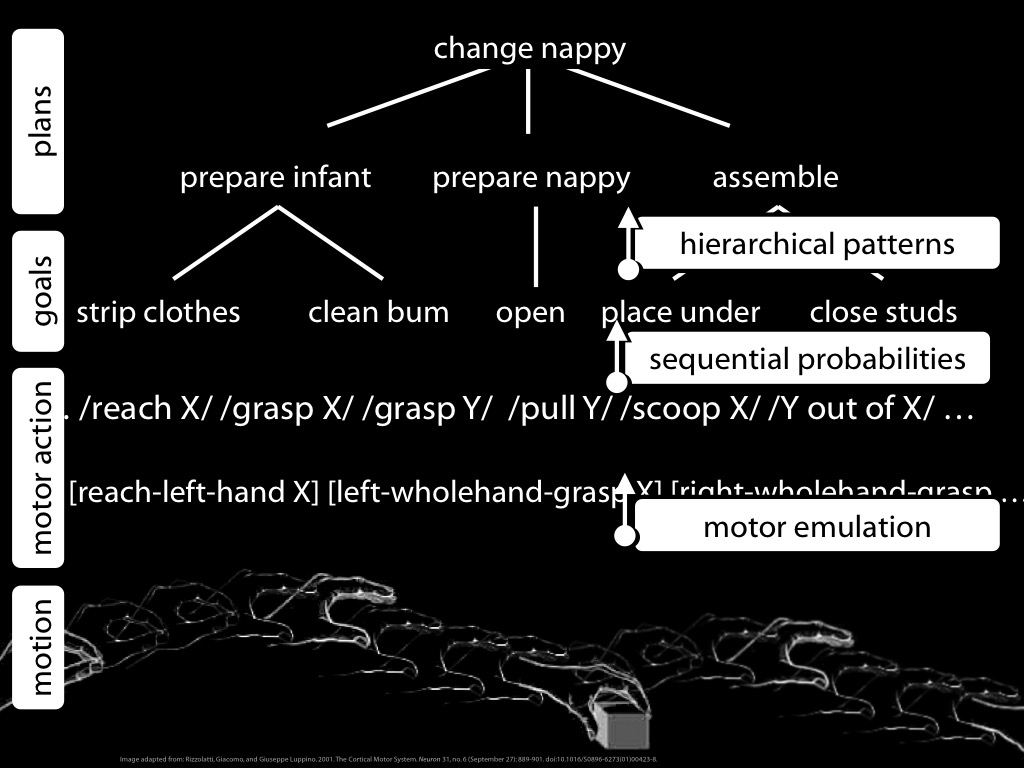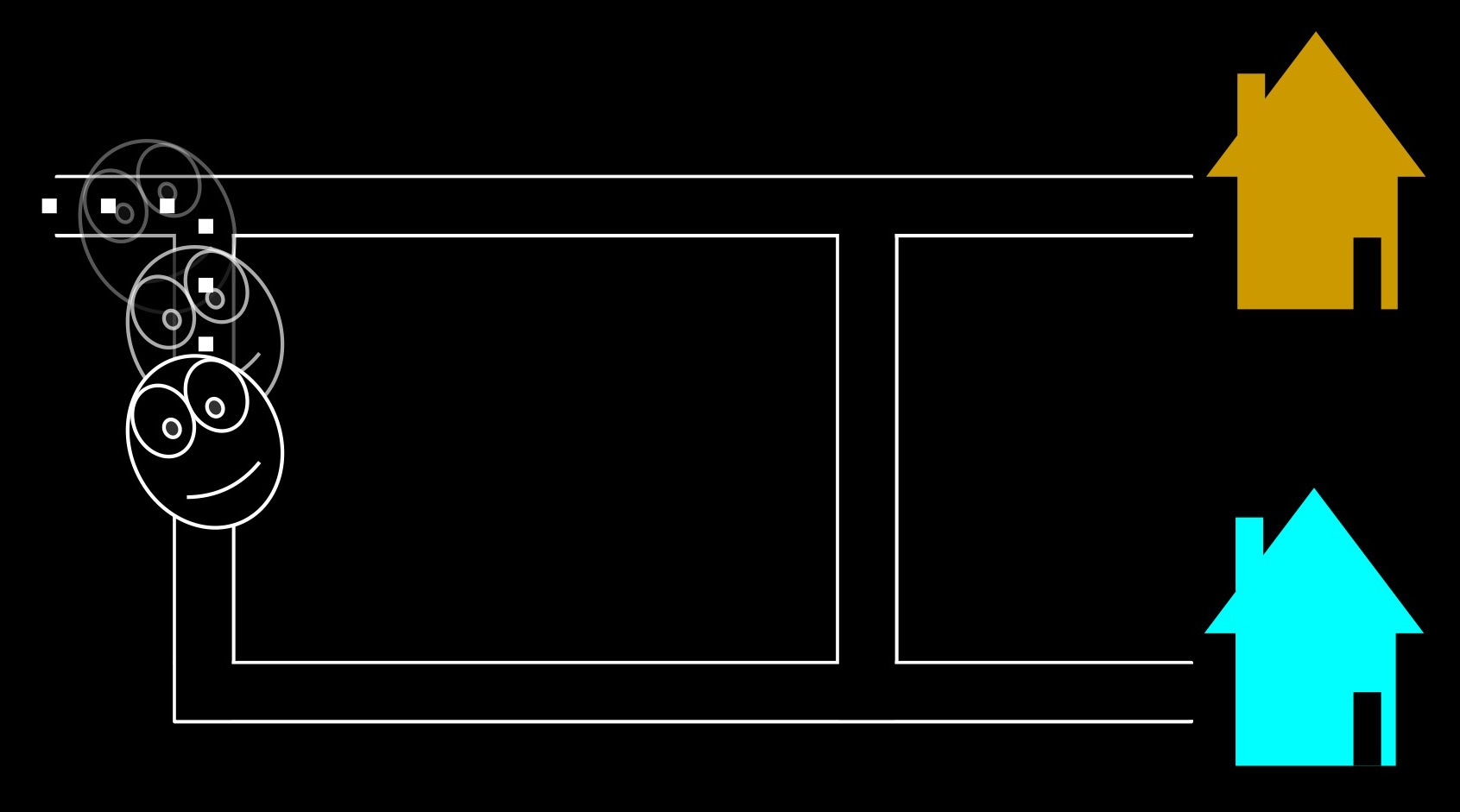Click here and press the right key for the next slide (or swipe left)
also ...
Press the left key to go backwards (or swipe right)
Press n to toggle whether notes are shown (or add '?notes' to the url before the #)
Press m or double tap to slide thumbnails (menu)
Press ? at any time to show the keyboard shortcuts

11: The Motor Theory of Goal Tracking
[email protected]
pure goal tracking
Infer The Goals from The Evidence
The Goals: facts which goals particular actions are directed to...
The Evidence: facts about events and states of affairs that could be known without knowing which goals any particular actions are directed to, nor any facts about particular mental states ...
goal ascription goal tracking
Goal tracking matters for
identifying mental states
identifying effects of actions
predicting when an event of interest will occur
learning how to do things

Byrne 2003, figure 1

The Teleological Stance

The ‘Teleological Stance’
~ The goals of an action are those outcomes which the means is a best available way of bringing about.
Csibra & Gergely
Planning
1. This outcome, G, is the goal (specification)
2. Means m is a best available* way of bringing G about
3. ∴ adopt m
Tracking
1. This means, m, has been adopted (observation)
2. G is an outcome such that: m is a best available* way of bringing G about
3. ∴ G is a goal of the observed action
‘an action can be explained by a goal state if, and only if, it is seen as the most justifiable action towards that goal state that is available within the constraints of reality’
Csibra & Gergely (1998, 255)
1. action a is directed to some goal;
2. actions of a’s type are normally means of realising outcomes of G’s type;
3. no available alternative action is a significantly better* means of realising outcome G;
4. the occurrence of outcome G is desirable;
5. there is no other outcome, G′, the occurrence of which would be at least comparably desirable and where (2) and (3) both hold of G′ and a
Therefore:
6. G is a goal to which action a is directed.
How is this computed?

The Motor Theory of Goal Tracking

The Simple View
The principles comprising the Teleological Stance are things we know or believe, and we are able to track goals by making inferences from these principles and our beliefs about the means someone is pursuing.
‘when taking the teleological stance one-year-olds apply the same inferential principle of rational action that drives everyday mentalistic reasoning about intentional actions in adults’
(Gergely and Csibra 2003; cf. Csibra, Bíró, et al. 2003; Csibra and Gergely 1998: 259)
The Double Life of Motor Representation
Old Puzzle
What are those motor representations doing here?
Motor representations concerning the goals of observed actions sometimes facilitate the identification of goals.
New Question
How?
Motor Theory of Goal Tracking (including Speech Perception)




Sinigalia & Butterfill 2015, figure 1
The Motor Theory of Goal Tracking
is part of a dual-process theory ...

Marr’s Threefold Distinction
1. computational description
-- What is the thing for and how does it achieve this?
2. representations and algorithms
-- How are the inputs and outputs represented, and how is the transformation accomplished?
3. hardware implementation
-- How are the representations and algorithms physically realised?
Marr (1992, 22ff)
The ‘Teleological Stance’
~ The goals of an action are those outcomes which the means is a best available way of bringing about.
Csibra & Gergely
Tracking
1. This means, m, has been adopted (observation)
2. G is an outcome such that: m is a best available* way of bringing G about
3. ∴ G is a goal of the observed action
| The Simple View | Motor Theory of Goal-Tracking | |
| What is the function to be computed? | [Teleological Stance] | [Teleological Stance] |
| How is this function computed? | By reasoning from knowledge. | By using motor processes ‘in reverse’. |
| Why is goal-tracking limited by action ability? | ??? | Because both rely on motor processes. |
Use the method of signature limits to test the Motor Theory

conclusion
pure goal ascription
Infer The Goals from The Evidence
The Goals: facts which goals particular actions are directed to...
The Evidence: facts about events and states of affairs that could be known without knowing which goals any particular actions are directed to, nor any facts about particular mental states ...